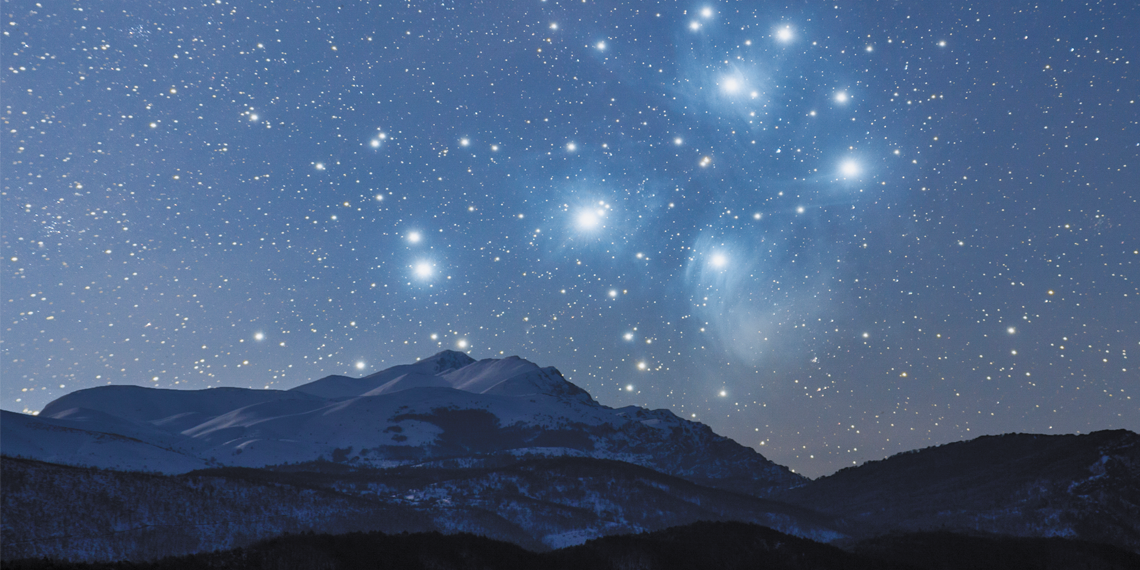You are here
Matariki and the Māori New Year

For thousands of years, throughout Aotearoa and the Pacific, the coldest and darkest time of the year is also one of its most special times. We have all felt the change! This shift in temperature is often described as ‘makariri’ in Māori and Rarotongan, ‘ma’ariri’ in Tahitian, ‘ma’alili’ in Hawaiian and ‘jolly cold’ in English!
Also making an appearance during these winter months is Matariki (Pleiades)—a cluster of stars known throughout the world. Pleiades is recorded in Greek mythology as the seven daughters of Atlas and Pleione, who were turned into doves and then into stars by Zeus.
There are many Matariki oral traditions found throughout the Pacific, with each iwi (nation) recording their own traditions and variations on the name for the star cluster.
Matariki signals the arrival of the Māori New Year! It is a time to gather together and remember the past—those who have gone before us and the legacy they have left us with. It is a time to reflect on where we are as a community and where we want to be in the future. For many, it is a time for setting new goals or assessing how we are tracking with previous goals.
In the 2015 National Strategic Plan, called Te Ōhākī, The Salvation Army set four goals for us all to work collectively toward. Matariki and the Māori New Year offer us the opportunity to take some time and look at how we are tracking with these goals—celebrating our progress and renewing our strength to go further!
Goal 1: Te tikanga o te hāhi—Being church together
How do our systems, policies, procedures and people reflect an intention to support tangata whenua to live out their Christian faith as Māori?
Goal 2: Kia rarangatia te tira—Leadership
How do our development plans (at a local, divisional and national level) make a greater investment in Salvation Army Māori leadership, to intentionally develop Māori leaders?
Goal 3: Whakawhanaungatanga—Relationships
How do our operational models foster and implement a culture of whakawhanaungatanga, to develop an environment that is welcoming and inclusive for Māori and for all people?
Goal 4: Kia rere iho te whakawā—Justice
How do our (personal and organisational) responses to the on-going social injustice of poverty that impacts Māori, show commitment to reducing inequalities for Māori?
In this makariri chilly season, let’s come together under the beauty of Matariki to celebrate our past. Let us plan for our future together and listen to the collective wisdom of all peoples; each one of us precious in the eyes of God.
Mā te Atua koutou e ārahi i te wā makariri o te Matariki.
by Hana Seddon (Ngāpuhi, Te Rarawa) (c) 'War Cry' magazine, 30 June 2018, p3 - You can read 'War Cry' at your nearest Salvation Army church or centre, or subscribe through Salvationist Resources.